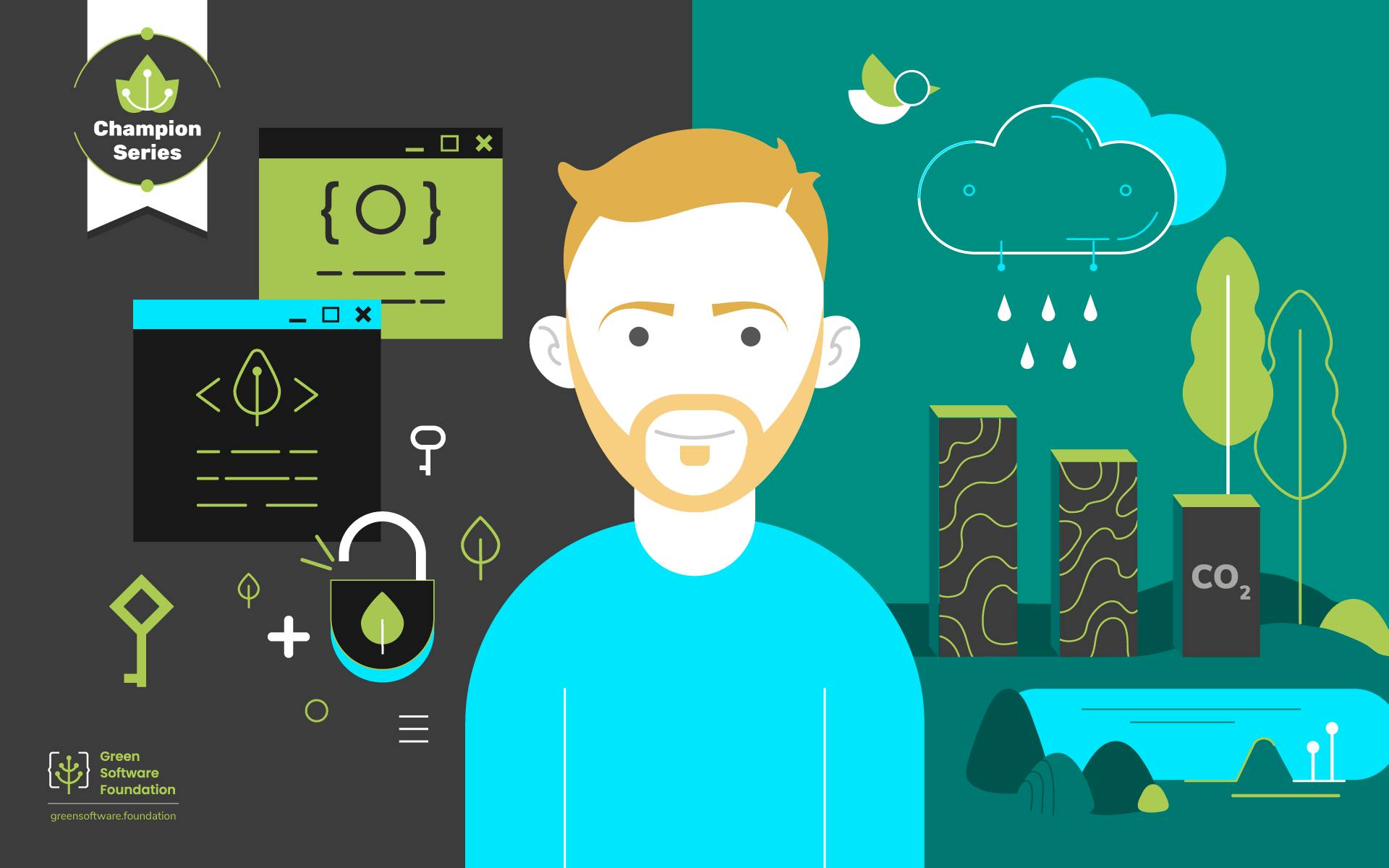What inspired you to focus on the intersection of software engineering and environmental sustainability?
I transitioned from a background in law to a career in technology after university, where my initial focus was on environmental law. Even after changing careers, my attention remained on the environment because of what I saw in the world around me - plastics, e-waste, and the effects of pollution. Surprisingly, I hadn't considered the environmental impact of software, particularly its carbon footprint.
I first started thinking about technology's environmental impact during the lockdowns of the COVID-19 pandemic, seeing the temporary changes in air pollution and the fall in carbon dioxide emissions. When the Green Software Foundation launched in 2021, I immediately knew this was the type of organization I'd been looking for, and lucky for me, Avanade joined within a month or two.
What’s the underlying philosophy?
We need to find a new stability and status quo in our use of resources - stewarding the limited resources we have to support environmental sustainability - making technology circular, deciding when it's best not to create something new, or focussing on renewal and repair. It's about creating a new norm where we carefully consider our resource consumption, energy efficiency, and carbon emissions without compromising technological advancements. Establishing this new balance meshes with my passion for driving societal change.
Which recent developments were catalytic in advancing a green transition in software?
Over the past few years, many initiatives have focused on a green transition in software - the shift towards measuring the performance of open source solutions and energy-efficient coding practices has been significant. However, sustainability was not the primary objective for many individuals initially. We saw efficiency as a byproduct of memory safety in languages like Rust, a drive to reduce load times in interpreted serverless deployments of Python, and memory-constrained IoT devices drove the need for resource-efficient solutions. In effect, we stumbled upon sustainability while seeking efficiency.
Now, seeing the rise of sustainably powered cloud computing from hyper-scalers and regional players, sustainability as a measurement is here to stay and is no longer a serendipitous byproduct of other priorities.
Will open source be able to deliver the results we are hoping for?
Open source has immense potential to drive sustainable software practices. Its collaborative nature encourages diverse contributions, fosters innovation, and helps to adapt green methods rapidly. By embracing open source, the tech community can work together to develop solutions that prioritize environmental sustainability without hindering growth or innovation.
Will open source deliver the results we seek? It hinges on factors like people's engagement and adoption, which are complex variables to predict. Nevertheless, it's worth noting that the GSF has a highly committed core group of supporters!
What advice would you give to developers and engineers passionate about building green software?
When it comes to building green software, I’d say:
Think about what you're building your software with and why before considering efficiency. For example, if you always deploy to the same operating system, a native application might be more efficient than an electron or cross-platform app.
Consider how much you import when using an open source package - does it come with a tree of dependencies, features, and unused code paths?
Talk to your peers, join a meetup, stay updated on the best practices and technologies that promote sustainability, and never underestimate the difference a single person can make.
How relevant are collaboration and partnerships for green software?
Collaboration and partnerships are essential in driving sustainable practices in technology. Companies can share knowledge, resources, and innovation by working together, speeding up the transition to green software. This cooperative approach fosters collective responsibility for our planet and helps us achieve greater sustainability in the tech industry.
Right now, we need more collaboration - I hope the GSF will become a hub for passionate people coming together to solve problems rather than reinventing the wheel in different locations and groups. We're just over two years in with the GSF - we've defined the measurements and created amazing tools. Now we need to work with the tech industry to continue to evangelize the established approaches.
What lies ahead for you?
In the next two years, at least with the Green Software Foundation, my emphasis will shift towards fostering community connections that extend the GSF's presence beyond major metropolitan areas like London. The aim is to broaden the reach of sustainability practices.
I would love for us to work and collaborate with other open source foundations to accelerate the adoption of the Carbon Aware SDK and receive the same level of recognition as other tools like Docker or Kubernetesand. I'm also passionate about working with university and apprenticeship partners to instill green software consciousness in the next generation of developers right from the start. On a more personal note, I’m constantly pursuing opportunities where I can work with interesting people, build new things, and make an impact!
This article is licenced under Creative Commons (CC BY 4.0)
